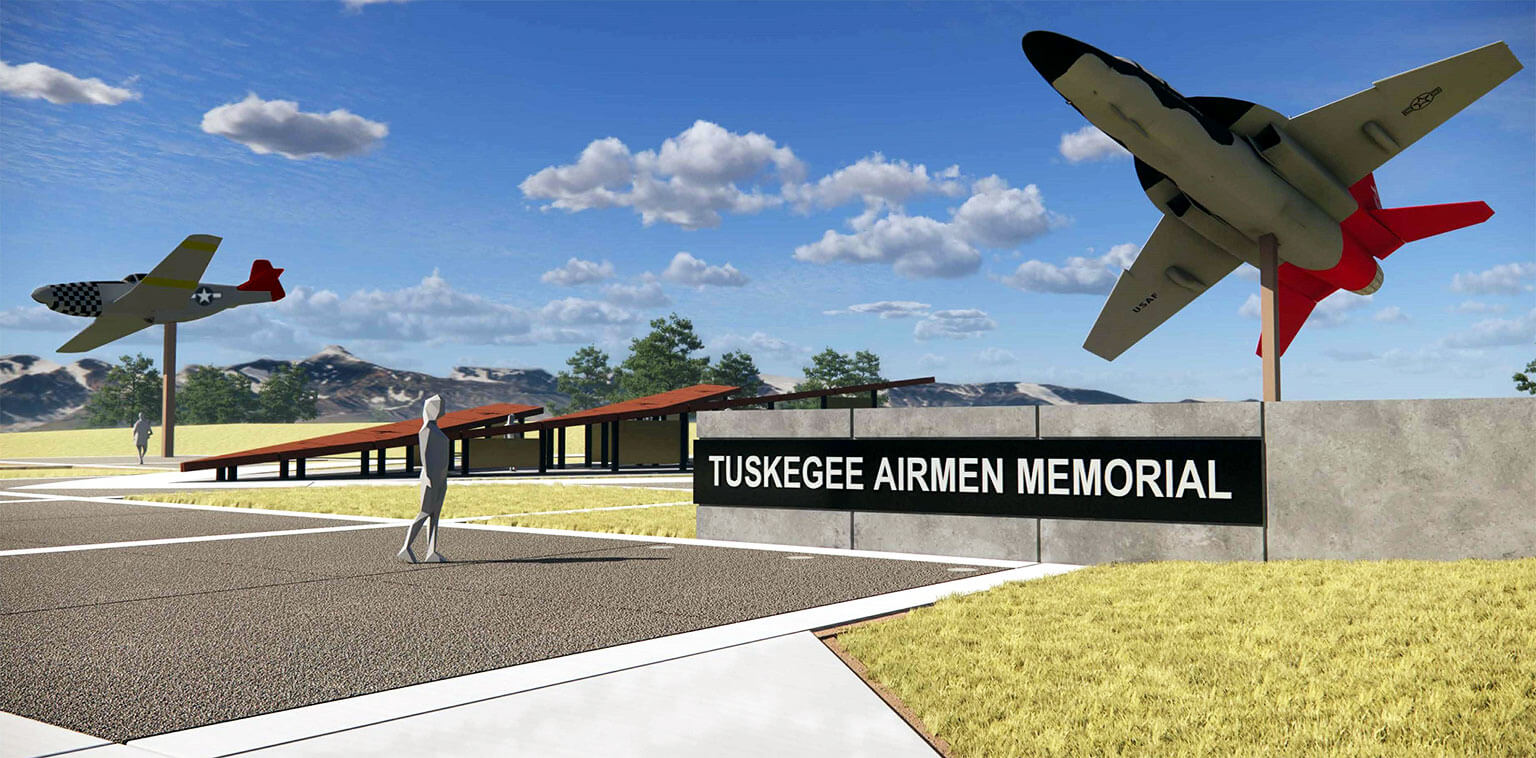Planned airfield overlook honors Tuskegee Airmen
 An artist’s rendering of the upcoming Tuskegee Airmen Memorial overlooking Davis Airfield at the U.S. Air Force Academy, Colo.
An artist’s rendering of the upcoming Tuskegee Airmen Memorial overlooking Davis Airfield at the U.S. Air Force Academy, Colo.
By Katherine Spessa
U.S. Air Force Academy Strategic Communications
U.S. AIR FORCE ACADEMY, Colo. – Officials renamed the Academy’s airfield in November 2019 to Davis Airfield after Gen. Benjamin O. Davis Jr., a renowned Tuskegee Airman and barrier-breaking Air Force leader. Four years later, the U.S. Air Force Academy is now taking a further step toward honoring black World War II pilots with a planned Tuskegee Airmen Memorial overlooking the airfield.
Officials are working hand-in-hand with the Air Force Academy Foundation to plan and fund the memorial. What started out as an idea for a simple static display soon grew into something much more as planners contemplated the Tuskegee Airmen’s rich history.
The overlook will feature a P-51 Mustang in flight, the aircraft famously piloted by Tuskegee Airmen in World War II, and a T-7A Redhawk, painted with a red tail flash in their honor, representing both the past and the future. Between the two static displays will be a Double-V sculpture, representing the Tuskegee Airmen’s double victory abroad and at home.
“This was representative of what the Tuskegee Airmen were fighting for,” said Mark Hille, Association of Graduates and Air Force Academy Foundation chief executive officer. “Victory abroad in their combat role, demonstrating that they had every capability to fight and defend their nation and that was a victory at home for all Americans who observed their heroic performance.”
“It wasn’t just about the tactical success of the Tuskegee Airmen,” agreed Lt. Gen. Richard Clark, the Academy’s superintendent. “It wasn’t just about the combat victories that they amassed, and they had plenty of them. They had to win both victories in order to serve. They were going to be able to win that victory abroad; they had to win that victory over discrimination at home.”
A rich history that echoes through to the present
The memorial, which will be located beside the entry to Davis Airfield, will also include interpretative exhibits detailing the history of the first African American U.S. military pilots.
After two decades of lobbying and advocacy, the Tuskegee Airmen became the first African American flying unit in a U.S. Armed Forces that was still racially segregated. Following training at the Tuskegee Institute (now Tuskegee University), the Tuskegee Airmen flew fighter aircraft in the European and African theaters, escorting bombers.
Nearly 1,000 pilots graduated from the program and went on to fly over 1,500 missions. Davis was their first commander.
Then: fought to serve, now: asked to serve
“The Tuskegee Airmen were recruited from across the country,” said Clark. “They came from the West Coast, they came from the Midwest, they came from the Northeast and they came from the South, but they all congregated at Tuskegee in Moten Field, Alabama. And that was a place where discrimination was rampant.”
The Tuskegee Airmen faced intense discrimination and obstacles to training in the Jim Crow South, but persevered to become one of the Army Air Corps’ most successful and decorated escort groups during World War II.
As with the Tuskegee Airmen, Academy cadets are recruited from all walks of life, brought to the mountains of Colorado to train and serve. Unlike the Tuskegee Airman, Clark hopes all here feel welcomed and respected.
“There are so many leaders out there that represent the progress we’ve made since the time that the Tuskegee Airman had to fight to serve,” Clark said. “Now we’re being asked to serve and it is a privilege to be able to do it.”